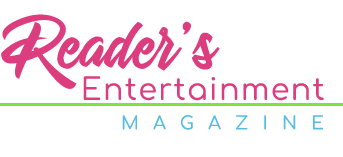Recently, The New York Times posted a story about the launch of Booktrack an e-book company that adds musical soundtracks and sound effects to classic (public domain) novels like The Adventures of Huckleberry Finn and Jane Eyre; they’ve also partnered with HarperCollins to provide aural accompaniment for the contemporary YA fantasy The Power of Six, and are hoping to expand that line in the months ahead. (Already, they’ve got plans to release their own editions of short stories by Salman Rushie and Jay McInerney.)
Much of the immediate reaction on Twitter to the Times article was supremely dismissive, and the mood hasn’t changed much as responses longer than 140 characters have started popping up. The title of Paul Carr’s TechCrunch review sums up the prevailing sentiment quite efficiently: “Just a Horrible Idea. Really Horrible.” Gadget Lab reviewer Charlie Sorrel described the audio component as “incredibly jarring, elaborating: “The beauty of a book is that the whole world is as real as you can imagine it to be. Adding tawdry effects doesn’t enhance the experience—it just makes the whole thing seem fake.”
Granted, the artistic claims being made for Booktrack are more than a little grandiose—just take a look at one of their official promotional videos:
http://www.youtube.com/embed/K1rLBnltxV0
In his interview with the Times, Booktrack co-founder Paul Cameron expanded on the video’s messianic themes: “It makes a new and engaging way to read and really enhances the experience and enhances your imagination and keeps you in the story longer,” he said. “And it makes it fun to read again. If you’re not reading all the time, it might help you rediscover reading.” (“Reading” in cases like this is a shorthand for “reading literary fiction, or maybe some smart nonfiction,” as opposed to all the other reading we do in our lives.) When you put it in such stark terms, yes, it can sound a bit silly. But is it inherently wrong?
There’s no question that adding music and sound effects to literature could go horribly wrong in its execution, creating a new inventory of clichés on a par with the rolling piano music used to accompany chase scenes in so many silent films. On the other hand, it could go awesomely right: A few years ago, Brian Eno produced an ambient soundtrack for an audiobook of Michel Faber’s “The Fahrenheit Twins” . For me, it’s great background music, subtly setting the mood rather than dominating my experience of Faber’s story, and I’d welcome something like it officially bundled with texts. It’s actually not all that different from how I’m reading stories now; the main difference is that I select my own background music from my iTunes library (and lately from Spotify’s much larger collection).
It’s probably not all that different from how you read, either—it’s not as if we read in soundproofed rooms, wearing blinkers to cut off our peripheral vision to prevent even the slightest distraction from the words on the page. (In fairness, I do know some people who prefer to read in as silent an environment as possible, but even they aren’t militant about it.)
We could probably agree, then, that the possibility of using audio-based art to create an entertaining addition to pre-existing literature exists—just as musicians like Bill Frisell or Alloy Orchestra have been composing and performing original scores for classic silent films for years. Whether or not Booktrack is a company that can do it remains to be seen, but I believe it can and will be done.
There’s still the question, though, of whether the audio-based art will always be a secondary component grafted onto the literary text, or whether someone can create a new art form that fully integrates audio and text. (Film offers a relevant example here, too; the introduction of synchronous sound—including dialogue and pre-recorded music—to the previously silent motion picture was the subject of as intense a debate as we’re witnessing over Booktrack’s technological innovations.) To answer that question, we need to wait for an author who fully engages herself with the development of the audio elements of her story, whether she actively collaborates with a sound artist or creates those elements herself—which should already be feasible with existing software. Once we have examples of that new art form to evaluate, then we can judge the success or failure of those works. Quite likely many of them will be “bad” in some way; the prose will strike us as inelegant, the sounds will feel intrusive and unnaturalistic, or the story itself will come off as unbelievable and trite. Honestly, though, if you set aside the audio component, how different is that from the state of contemporary literature anyway?
So let’s give Booktrack a chance before we condemn it to the scrap heap, shall we? And let’s welcome competing companies and artists, with their own ideas about how to integrate sound and text. If you don’t like what they deliver, you’ll still be able to enjoy plenty of stories where the only accompanying soundtrack is the rustle of the turning pages.
—Ron Hogan helped create the literary Internet by launching Beatrice.com in 1995. His most recent book is Getting Right with Tao, a print edition of his popular online “translation” of the Tao Te Ching into modern vernacular.
He is also the author of The Stewardess Is Flying the Plane, a visual tribute to ’70s Hollywood, and a contributor to several anthologies, including the New York Times bestseller Not Quite What I Was Planning, Forgotten Borough: Writers Come to Terms with Queens, and Secrets of the Lost Symbol.







